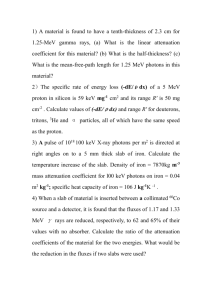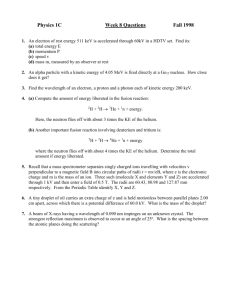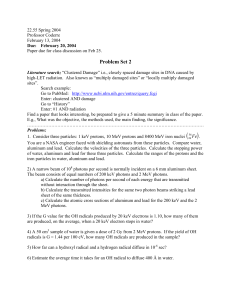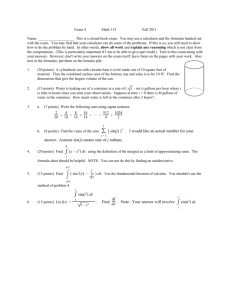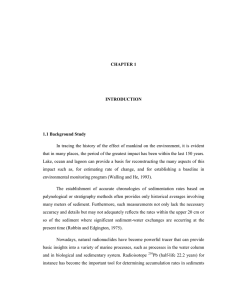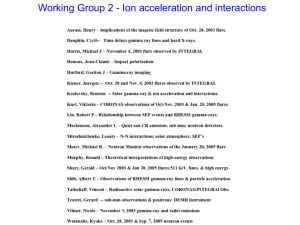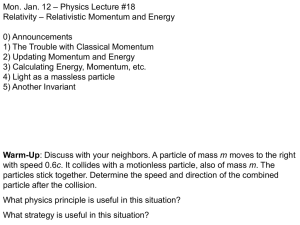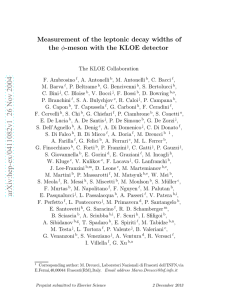Physics 1C
advertisement
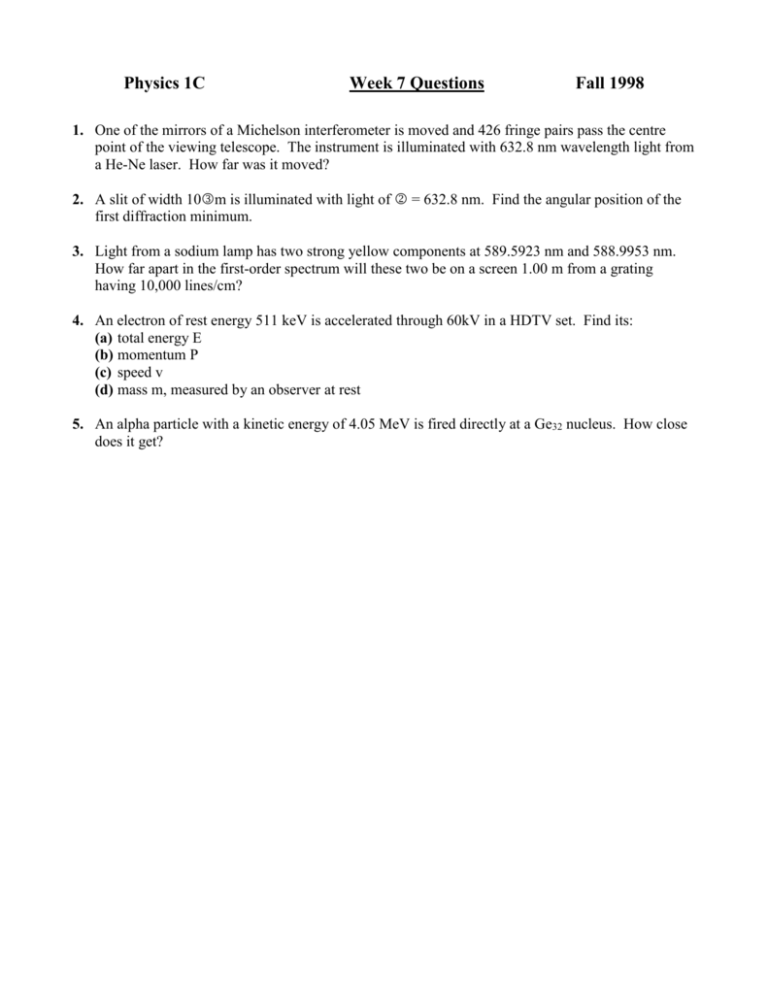
Physics 1C Week 7 Questions Fall 1998 1. One of the mirrors of a Michelson interferometer is moved and 426 fringe pairs pass the centre point of the viewing telescope. The instrument is illuminated with 632.8 nm wavelength light from a He-Ne laser. How far was it moved? 2. A slit of width 10m is illuminated with light of = 632.8 nm. Find the angular position of the first diffraction minimum. 3. Light from a sodium lamp has two strong yellow components at 589.5923 nm and 588.9953 nm. How far apart in the first-order spectrum will these two be on a screen 1.00 m from a grating having 10,000 lines/cm? 4. An electron of rest energy 511 keV is accelerated through 60kV in a HDTV set. Find its: (a) total energy E (b) momentum P (c) speed v (d) mass m, measured by an observer at rest 5. An alpha particle with a kinetic energy of 4.05 MeV is fired directly at a Ge32 nucleus. How close does it get? Physics 1C 1. 2. Week 7 Solutions Fall 1998 x The path difference increases by for every /2 moved by our mirror and results in one fringe passage. Thus, x = N(/2) = 426/2 (632.8 nm) = 0.135 mm. = N N 2 Minima occur at asin = m, n = 1, 2, 3, … a At the first minimum m = 1 m , a a (632.8 10 9 ) = arc sin = arc sin = 3.628 o (10 10 6 ) a Solve for , sin = 3. y1 = s1/a, y2 = s2/a, y1 - y2 = (589.5923 - 588.9953)(10-9)(1.00 m)/(10-6) = 0.597 mm. Using s = 1m and a = 10 -4 cm = 10-6 m. 4. (a) E = 511 + 60 = 571 keV (b) E p c mo c p 2 2 2 2 4 1 1 2 ( E mo2 c 4 ) 2 c 1 1 1 p (5712 5112 ) 2 (254.8) 254.8 keV/c c c (c) E mc 2 mo c 2 1 m c v 2 o c E 2 2 (d) m mo v2 1 2 c v2 c2 2 1 v 2 mo c 2 E c2 1 1 m c2 2 2 511 2 2 o c 1 hence v 1 c 0.446 c E 571 511 511 511 571 keV/c2 2 0 . 895 1 0 . 199 1 (0.446) 5. At closest approach, initial KE = work done = PE = kQ( 2e) , x x kQ( 2e) KE (9 10 9 )(32)(1.6 10 19 )2(1.6 10 19 ) 2.28 10 14 22.8 fm x 6 19 (4.05 10 )(1.6 10 ) KE = 4.05 MeV KE = 0 at closest approach particle x Ge32 nucleus
